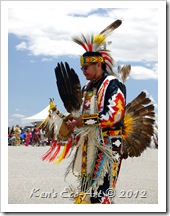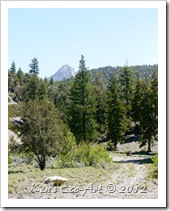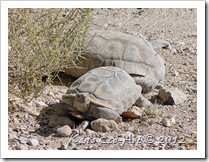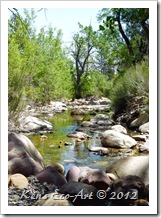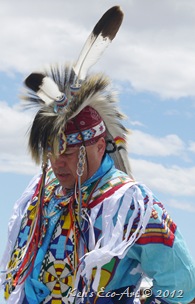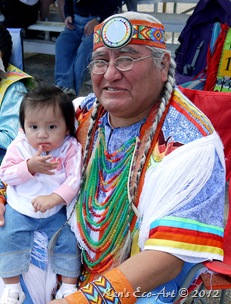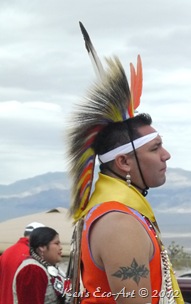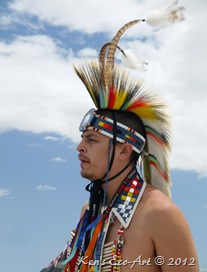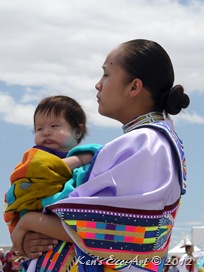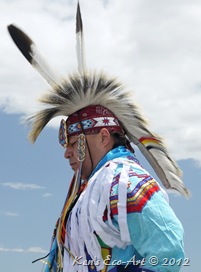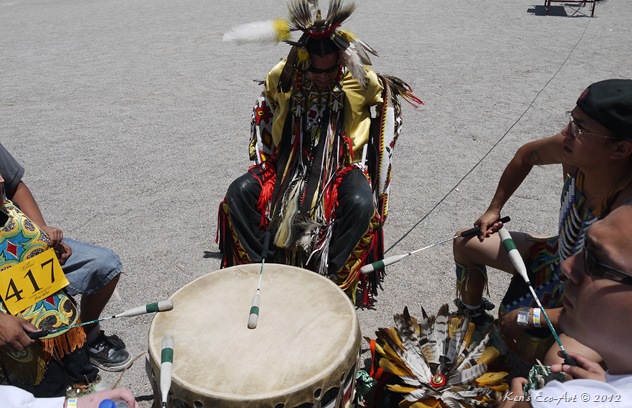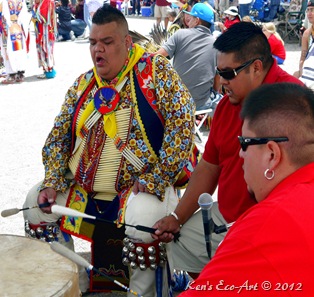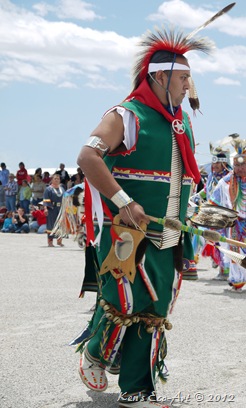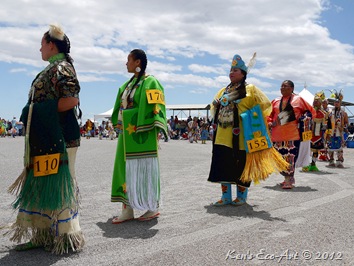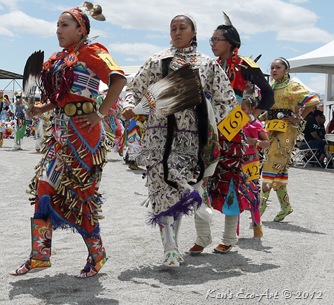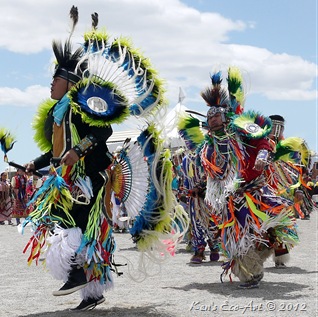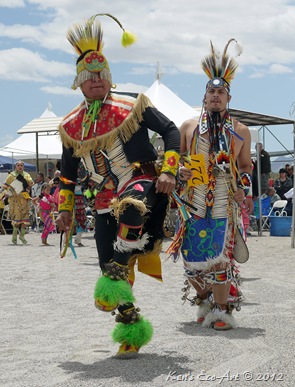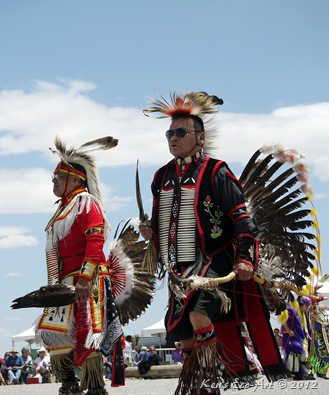{Click on an image to enlarge, then use the back button to return to this page}
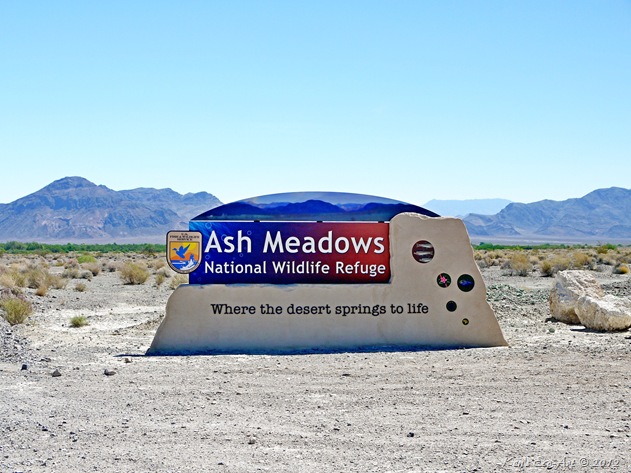 |
| (Fig. 01) |
|
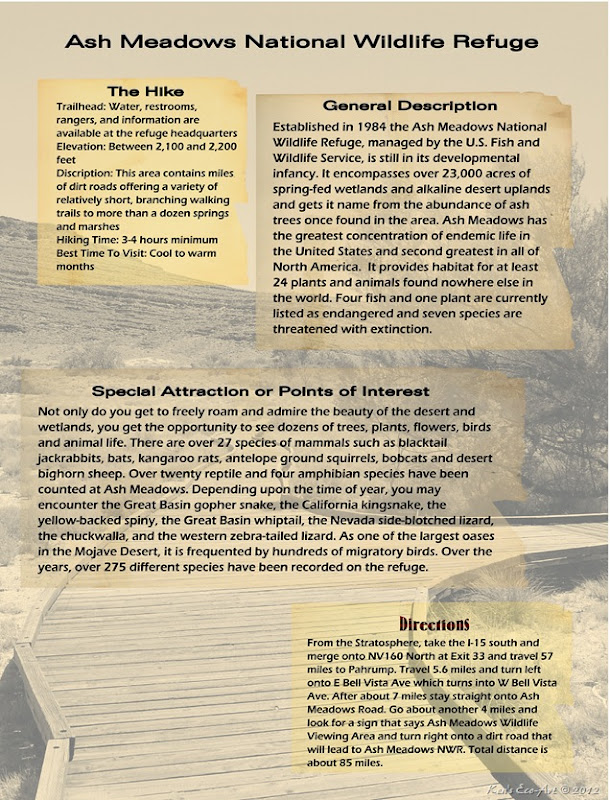
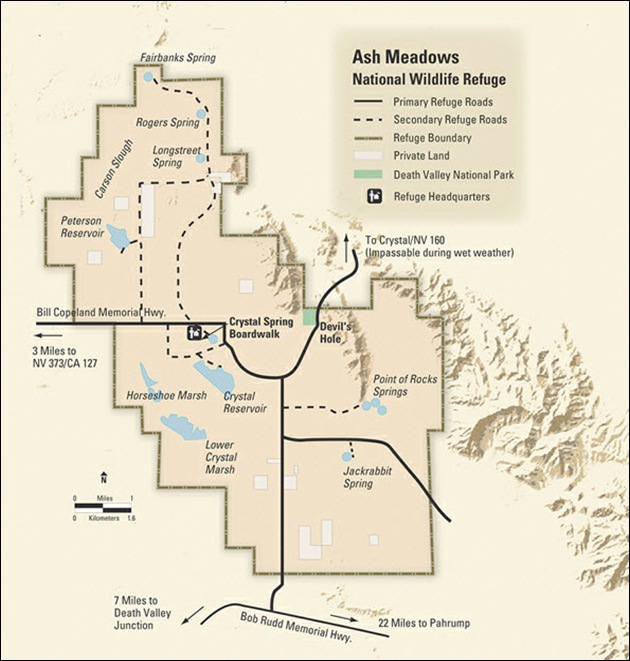 |
| (Fig. 02) |
|
10/29/2015 Trip Notes: This is my second visit to Ash Meadows with the rock-hounds from Henderson’s Heritage Park Senior Center. This was the first time we were able to visit their new Visitor Center. Upon our visit to the visitor center we learned that they experienced the worst rain storm in the existence, more than 2 inches of rain that flooded the entire area and wash out many of its roads. Everything north of the visitor center (Fig. 02), including the road to the Crystal Reservoir were all closed. Today we were restricted to Crystal Spring Boardwalk, behind the visited center, and Devil’s Hole and the Point of Rocks Springs. Click here for pictures and information on today’s visit … Ash Meadows NWR - 10/29/2015 Trip Notes.
11/06/2014 Trip Notes: Even though I visited this place back in August of 2012, this is the first time that the rock-hounds from the Heritage Park Senior Center has made this a destination. During today’s visit, we made stops at the Point of Rocks Springs, Devil’s Hole, Crystal Reservoir, and Crystal Springs Boardwalk adjacent to the Refuge’s headquarters and visitor center. Click here for more info on Ash Meadows and pictures and information on today’s visit … Ash Meadows NWR - 11/06/2014 Trip Notes.
|
|
06/08/2012 Trip Notes: Even though this refuge has more than 30 natural springs, there are seven major springs and reservoirs (Fig. 02) worthy of taking the time to view. Having entered from its southern entrance (Fig. 01), we slowly worked our way up to the refuge headquarters and the Crystal Spring Boardwalk, making our first stop at Point of Rocks Springs along the way. Below are pictures and summaries for each of our stops and hikes we made during this visit.
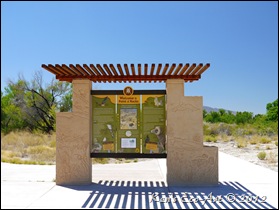 Point of Rocks Springs:
Point of Rocks Springs: The Point of Rocks springs area is the eastern most set of springs in the valley, almost up against the mountains that bound the valley to the east. Smaller than Crystal Spring, its long stream supports a large variety of grasses and vegetation as it runs southward. A meandering 3/4 mile boardwalk follows a relatively long outflow stream that provides some excellent ‘birding’ opportunities. The color of the spring itself is outstanding. We felt this was the best spring as both the spring and its outflow streams were filled with the rare Ash Meadows Amargosa Pupfish. Besides seeing dozens of birds, we spotted two baby desert cottontails and a
Western Zebra Tailed Lizard (Callisaurus draconoides rhodostictus). (Click to learn more)
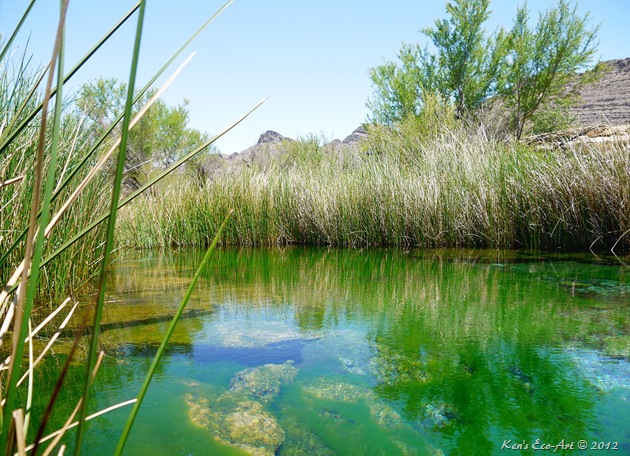
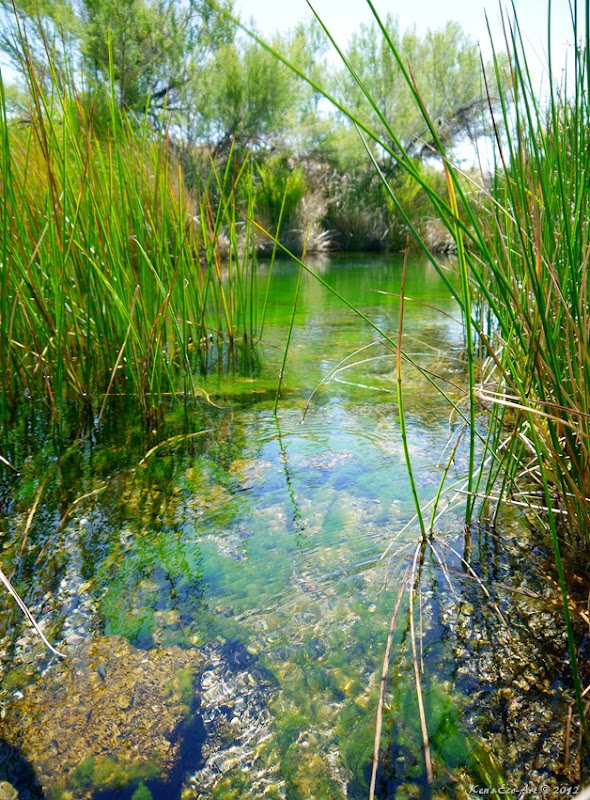

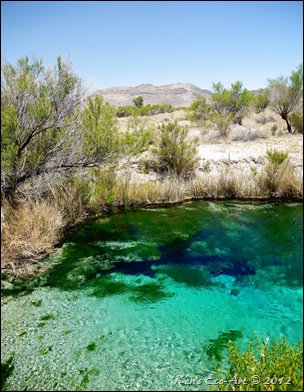 Crystal Spring:
Crystal Spring: Crystal Spring is a warm-water pool of clear, blue-green water, maybe 9-10 feet deep and 25 feet across, with various ducks and other birds in residence. It has a white sandy floor and some bright green algae and has an outflow stream that runs along the .4 mile Crystal Spring boardwalk that leads from the refuge office to the spring through fairly open, fairly flat desert landscape. It is surrounded by a few trees, lots of shrubs, and grapevines. The winding outflow stream runs along the boardwalk and through an open area with scattered screwbean mesquite thickets, various species of desert shrub, and a carpet of saltgrass. The bare areas are covered with a crust of salt, which almost looks like a blanket of snow. Crystal Spring gets its name from the ‘crystal’ clear water that it omits. There are many surrounding wetland – areas where water seeps to the surface but does not flow out like a spring, that are filled with bushes, grass, reeds, and an occasional tree that suck water up as fast as it comes to the surface. While walking the boardwalk as it followed the outflow stream we spotted dozens of dragonflies, some crawfish, and a few speckled dance.
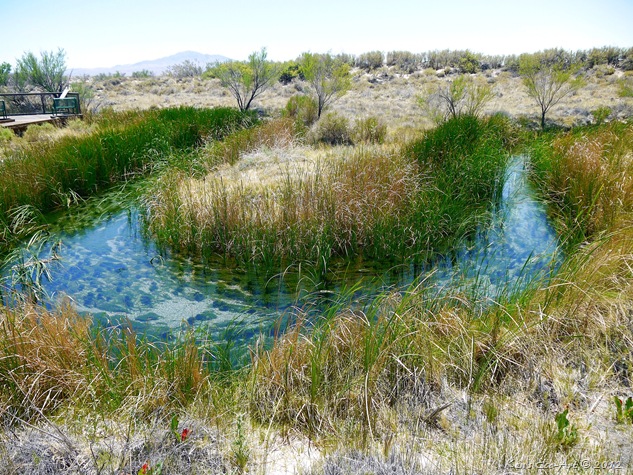
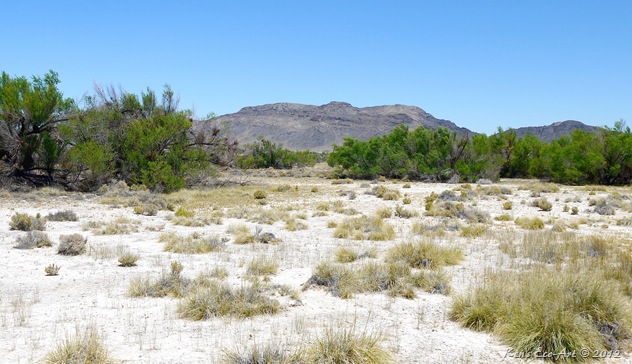

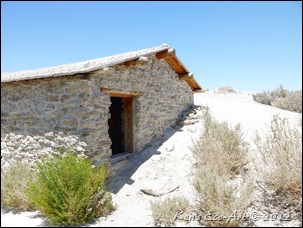 Longstreet Cabin
Longstreet Cabin. Completed in 2005, the Longstreet Cabin, a reconstructed historic stone structure, was originally built by Jack Longstreet, one of the legendary gunslingers of the early West. He arrived in Nevada in the 1880's seeking a fresh start from a shadowy past. Having killed many men, his skill with a gun gave him a reputation as a dangerous man. Because trouble seemed to follow him, he found it necessary to live in remote places to avoid his enemies. Circa 1895 he built his stone cabin into the side of a spring mound, ensuring access to fresh water if he ever had to barricade himself inside. Though his residence at Ash Meadows was short-lived, he continued to visit his cabin until he finally sold the property in 1906. Longstreet epitomized the mythical Western frontiersman: self-reliant, strong-willed, and fair-minded. Speaking with a southern drawl, he championed the rights of the Southern Paiute – with whom he often lived-- and protected mine workers during disputes. At the time of his death in 1928 he was revered as a gruff but kind old man with many stories of his gunslinger days.
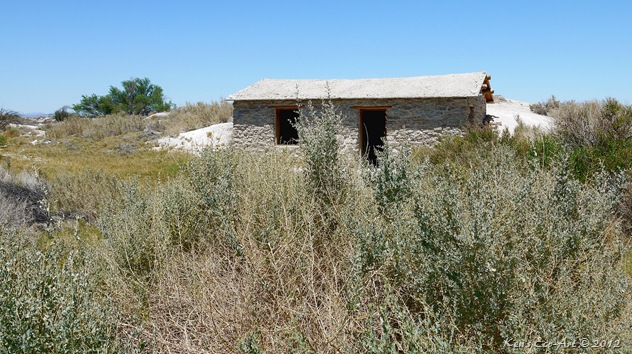

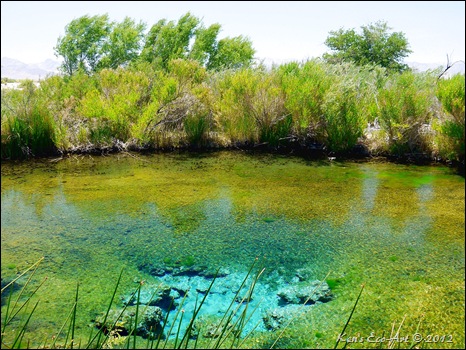 Longstreet Spring
Longstreet Spring. Situated directly in front of the Longstreet Cabin, the Longstreet Spring emerges into a deep, yet very clear, 40-foot-diameter spring pool. It is surrounded by mesquite and ash trees, plus lots of shrubs, sedges, and forbs. Away from the edge of the spring, the vegetation quickly changes to mesquite thickets with saltgrass, and then dry desert saltbush. There is a very strong outflow stream that flows west along a cattail-filled ditch whose noise makes it hard to hear the birds. This lush area is another good birding location. We didn’t observe any fish at this location.
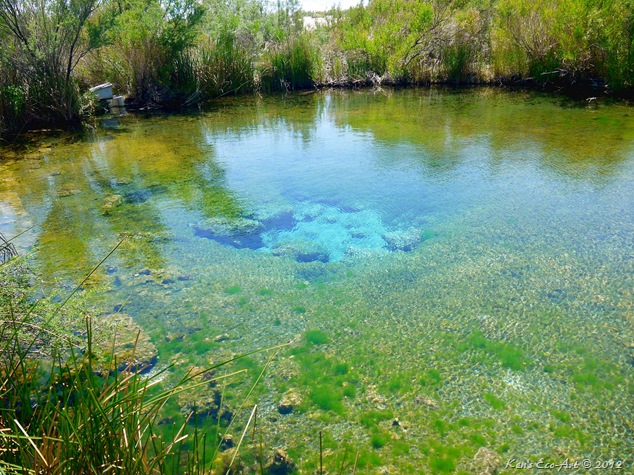

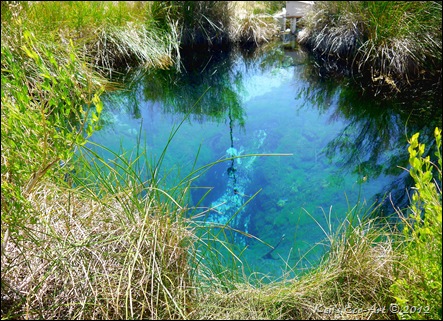 Rogers Spring
Rogers Spring. Rogers spring is located in a broad ravine near the base of some low hills. This was the last spring we visited today and though it was the smallest spring we visited, it was certainly the deepest. The spring emerges into a very deep spring pool that is about 25 feet in diameter. It is surrounded by salt grass, mesquite, saltcedar, and ash trees, plus lots of shrubs, sedges, and forbs. At the springs outflow the vegetation quickly changes to mesquite thickets, and then dry desert saltbush. As with almost all of the springs here, there is a outflow that runs west along a cattail-filled ditch. Similar to the Longstreet Spring, the noise from the strong outflow makes it hard to hear the birds. This lush area is another good birding location, however we did not observe any fish at this location.

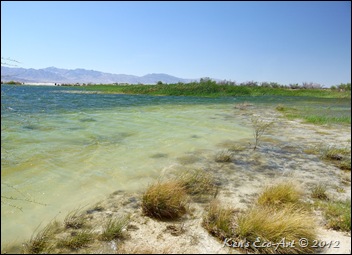 Crystal Reservoir and the Horseshoe and Lower Crystal Marshes:
Crystal Reservoir and the Horseshoe and Lower Crystal Marshes: On our way out, we made our last stop of the day at the Crystal Reservoir, the largest body of water on the refuge. Because it is an impoundment with a dam, it gets lots of maintenance and is the only place where swimming is allowed. This remarkably clear reservoir is held behind a low earthen dam along the western and southern sides. This dam is a good, elevated place to walk and watch birds on the water and in the thickets below the dam. There are cattails and bulrushes on the northwestern and southeastern ends of the lake, and a few other shrubs here and there, but most of the shoreline is clear and the views of the lake are unobstructed. This is normally a great place to view larger birds and waterfowl, however, because it had become quite windy, we only got to observe a few ducks. Two places we didn’t have time to visit were Horseshoe Marsh and Lower Crystal Marsh, both small ponds with relatively large marshland areas, located below the dam on its western side.
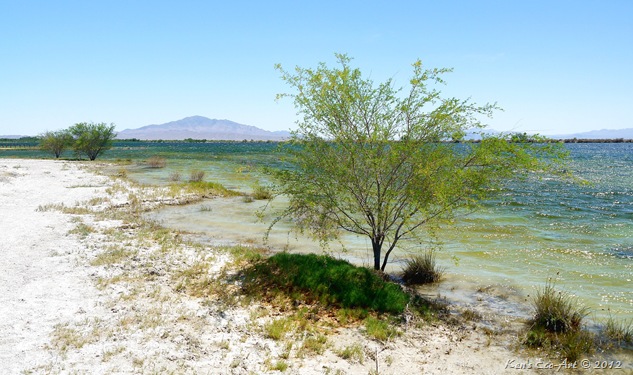
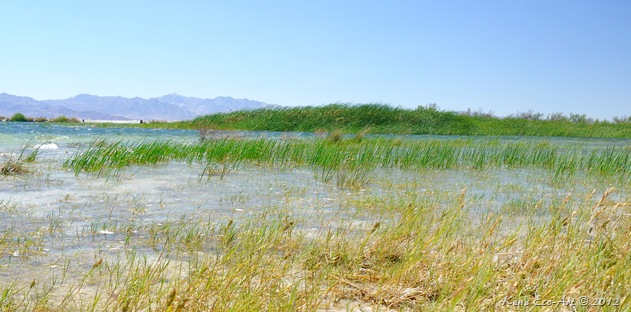
This 23,000 acre refuge is huge. Once inside, we traveled more than 30 miles reaching the areas that we visited, and even though there is a lot of plain old dry desert between them, most are certainly worth the drive. After all this, there were still five locations that we failed to visit; Devils Hole, Jackrabbit Spring, Fairbanks Spring, Peterson Reservoir, and the two marshland areas below the Crystal Reservoir. Oh well, there is always a next time....

 Point of Rocks Springs: The Point of Rocks springs area is the eastern most set of springs in the valley, almost up against the mountains that bound the valley to the east. Smaller than Crystal Spring, its long stream supports a large variety of grasses and vegetation as it runs southward. A meandering 3/4 mile boardwalk follows a relatively long outflow stream that provides some excellent ‘birding’ opportunities. The color of the spring itself is outstanding. We felt this was the best spring as both the spring and its outflow streams were filled with the rare Ash Meadows Amargosa Pupfish. Besides seeing dozens of birds, we spotted two baby desert cottontails and a Western Zebra Tailed Lizard (Callisaurus draconoides rhodostictus). (Click to learn more)
Point of Rocks Springs: The Point of Rocks springs area is the eastern most set of springs in the valley, almost up against the mountains that bound the valley to the east. Smaller than Crystal Spring, its long stream supports a large variety of grasses and vegetation as it runs southward. A meandering 3/4 mile boardwalk follows a relatively long outflow stream that provides some excellent ‘birding’ opportunities. The color of the spring itself is outstanding. We felt this was the best spring as both the spring and its outflow streams were filled with the rare Ash Meadows Amargosa Pupfish. Besides seeing dozens of birds, we spotted two baby desert cottontails and a Western Zebra Tailed Lizard (Callisaurus draconoides rhodostictus). (Click to learn more)

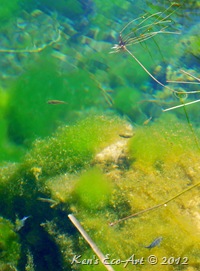
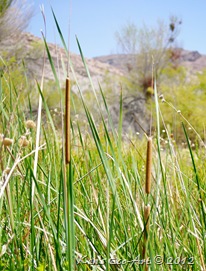
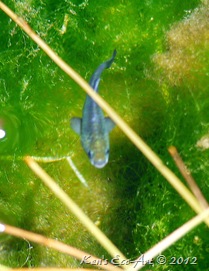
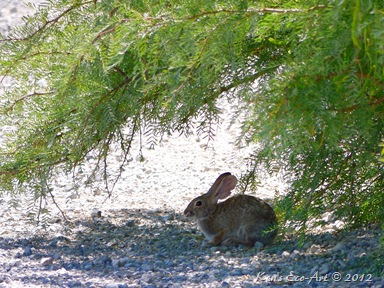
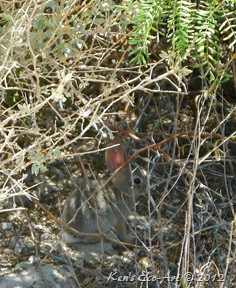
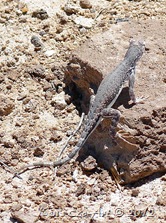
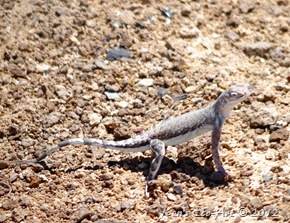
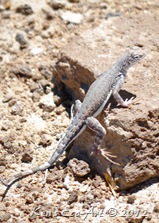
 Crystal Spring: Crystal Spring is a warm-water pool of clear, blue-green water, maybe 9-10 feet deep and 25 feet across, with various ducks and other birds in residence. It has a white sandy floor and some bright green algae and has an outflow stream that runs along the .4 mile Crystal Spring boardwalk that leads from the refuge office to the spring through fairly open, fairly flat desert landscape. It is surrounded by a few trees, lots of shrubs, and grapevines. The winding outflow stream runs along the boardwalk and through an open area with scattered screwbean mesquite thickets, various species of desert shrub, and a carpet of saltgrass. The bare areas are covered with a crust of salt, which almost looks like a blanket of snow. Crystal Spring gets its name from the ‘crystal’ clear water that it omits. There are many surrounding wetland – areas where water seeps to the surface but does not flow out like a spring, that are filled with bushes, grass, reeds, and an occasional tree that suck water up as fast as it comes to the surface. While walking the boardwalk as it followed the outflow stream we spotted dozens of dragonflies, some crawfish, and a few speckled dance.
Crystal Spring: Crystal Spring is a warm-water pool of clear, blue-green water, maybe 9-10 feet deep and 25 feet across, with various ducks and other birds in residence. It has a white sandy floor and some bright green algae and has an outflow stream that runs along the .4 mile Crystal Spring boardwalk that leads from the refuge office to the spring through fairly open, fairly flat desert landscape. It is surrounded by a few trees, lots of shrubs, and grapevines. The winding outflow stream runs along the boardwalk and through an open area with scattered screwbean mesquite thickets, various species of desert shrub, and a carpet of saltgrass. The bare areas are covered with a crust of salt, which almost looks like a blanket of snow. Crystal Spring gets its name from the ‘crystal’ clear water that it omits. There are many surrounding wetland – areas where water seeps to the surface but does not flow out like a spring, that are filled with bushes, grass, reeds, and an occasional tree that suck water up as fast as it comes to the surface. While walking the boardwalk as it followed the outflow stream we spotted dozens of dragonflies, some crawfish, and a few speckled dance. 
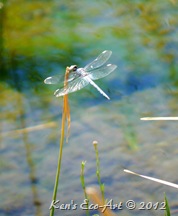
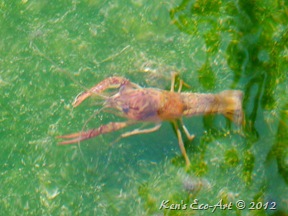
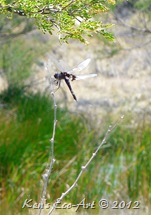

 Longstreet Cabin. Completed in 2005, the Longstreet Cabin, a reconstructed historic stone structure, was originally built by Jack Longstreet, one of the legendary gunslingers of the early West. He arrived in Nevada in the 1880's seeking a fresh start from a shadowy past. Having killed many men, his skill with a gun gave him a reputation as a dangerous man. Because trouble seemed to follow him, he found it necessary to live in remote places to avoid his enemies. Circa 1895 he built his stone cabin into the side of a spring mound, ensuring access to fresh water if he ever had to barricade himself inside. Though his residence at Ash Meadows was short-lived, he continued to visit his cabin until he finally sold the property in 1906. Longstreet epitomized the mythical Western frontiersman: self-reliant, strong-willed, and fair-minded. Speaking with a southern drawl, he championed the rights of the Southern Paiute – with whom he often lived-- and protected mine workers during disputes. At the time of his death in 1928 he was revered as a gruff but kind old man with many stories of his gunslinger days.
Longstreet Cabin. Completed in 2005, the Longstreet Cabin, a reconstructed historic stone structure, was originally built by Jack Longstreet, one of the legendary gunslingers of the early West. He arrived in Nevada in the 1880's seeking a fresh start from a shadowy past. Having killed many men, his skill with a gun gave him a reputation as a dangerous man. Because trouble seemed to follow him, he found it necessary to live in remote places to avoid his enemies. Circa 1895 he built his stone cabin into the side of a spring mound, ensuring access to fresh water if he ever had to barricade himself inside. Though his residence at Ash Meadows was short-lived, he continued to visit his cabin until he finally sold the property in 1906. Longstreet epitomized the mythical Western frontiersman: self-reliant, strong-willed, and fair-minded. Speaking with a southern drawl, he championed the rights of the Southern Paiute – with whom he often lived-- and protected mine workers during disputes. At the time of his death in 1928 he was revered as a gruff but kind old man with many stories of his gunslinger days.
 Longstreet Spring. Situated directly in front of the Longstreet Cabin, the Longstreet Spring emerges into a deep, yet very clear, 40-foot-diameter spring pool. It is surrounded by mesquite and ash trees, plus lots of shrubs, sedges, and forbs. Away from the edge of the spring, the vegetation quickly changes to mesquite thickets with saltgrass, and then dry desert saltbush. There is a very strong outflow stream that flows west along a cattail-filled ditch whose noise makes it hard to hear the birds. This lush area is another good birding location. We didn’t observe any fish at this location.
Longstreet Spring. Situated directly in front of the Longstreet Cabin, the Longstreet Spring emerges into a deep, yet very clear, 40-foot-diameter spring pool. It is surrounded by mesquite and ash trees, plus lots of shrubs, sedges, and forbs. Away from the edge of the spring, the vegetation quickly changes to mesquite thickets with saltgrass, and then dry desert saltbush. There is a very strong outflow stream that flows west along a cattail-filled ditch whose noise makes it hard to hear the birds. This lush area is another good birding location. We didn’t observe any fish at this location.
 Rogers Spring. Rogers spring is located in a broad ravine near the base of some low hills. This was the last spring we visited today and though it was the smallest spring we visited, it was certainly the deepest. The spring emerges into a very deep spring pool that is about 25 feet in diameter. It is surrounded by salt grass, mesquite, saltcedar, and ash trees, plus lots of shrubs, sedges, and forbs. At the springs outflow the vegetation quickly changes to mesquite thickets, and then dry desert saltbush. As with almost all of the springs here, there is a outflow that runs west along a cattail-filled ditch. Similar to the Longstreet Spring, the noise from the strong outflow makes it hard to hear the birds. This lush area is another good birding location, however we did not observe any fish at this location.
Rogers Spring. Rogers spring is located in a broad ravine near the base of some low hills. This was the last spring we visited today and though it was the smallest spring we visited, it was certainly the deepest. The spring emerges into a very deep spring pool that is about 25 feet in diameter. It is surrounded by salt grass, mesquite, saltcedar, and ash trees, plus lots of shrubs, sedges, and forbs. At the springs outflow the vegetation quickly changes to mesquite thickets, and then dry desert saltbush. As with almost all of the springs here, there is a outflow that runs west along a cattail-filled ditch. Similar to the Longstreet Spring, the noise from the strong outflow makes it hard to hear the birds. This lush area is another good birding location, however we did not observe any fish at this location.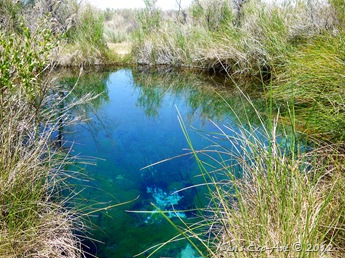
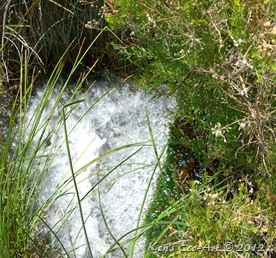
 Crystal Reservoir and the Horseshoe and Lower Crystal Marshes: On our way out, we made our last stop of the day at the Crystal Reservoir, the largest body of water on the refuge. Because it is an impoundment with a dam, it gets lots of maintenance and is the only place where swimming is allowed. This remarkably clear reservoir is held behind a low earthen dam along the western and southern sides. This dam is a good, elevated place to walk and watch birds on the water and in the thickets below the dam. There are cattails and bulrushes on the northwestern and southeastern ends of the lake, and a few other shrubs here and there, but most of the shoreline is clear and the views of the lake are unobstructed. This is normally a great place to view larger birds and waterfowl, however, because it had become quite windy, we only got to observe a few ducks. Two places we didn’t have time to visit were Horseshoe Marsh and Lower Crystal Marsh, both small ponds with relatively large marshland areas, located below the dam on its western side.
Crystal Reservoir and the Horseshoe and Lower Crystal Marshes: On our way out, we made our last stop of the day at the Crystal Reservoir, the largest body of water on the refuge. Because it is an impoundment with a dam, it gets lots of maintenance and is the only place where swimming is allowed. This remarkably clear reservoir is held behind a low earthen dam along the western and southern sides. This dam is a good, elevated place to walk and watch birds on the water and in the thickets below the dam. There are cattails and bulrushes on the northwestern and southeastern ends of the lake, and a few other shrubs here and there, but most of the shoreline is clear and the views of the lake are unobstructed. This is normally a great place to view larger birds and waterfowl, however, because it had become quite windy, we only got to observe a few ducks. Two places we didn’t have time to visit were Horseshoe Marsh and Lower Crystal Marsh, both small ponds with relatively large marshland areas, located below the dam on its western side. 




